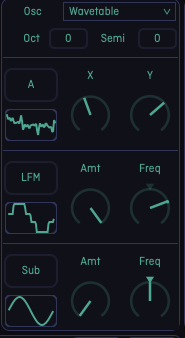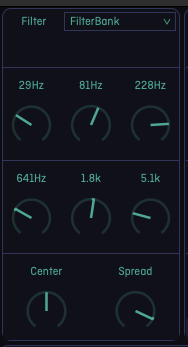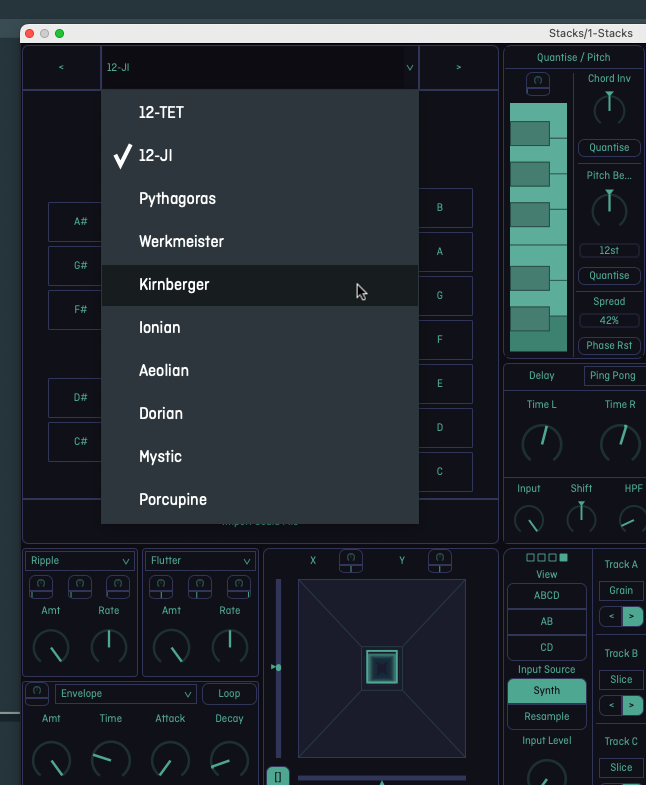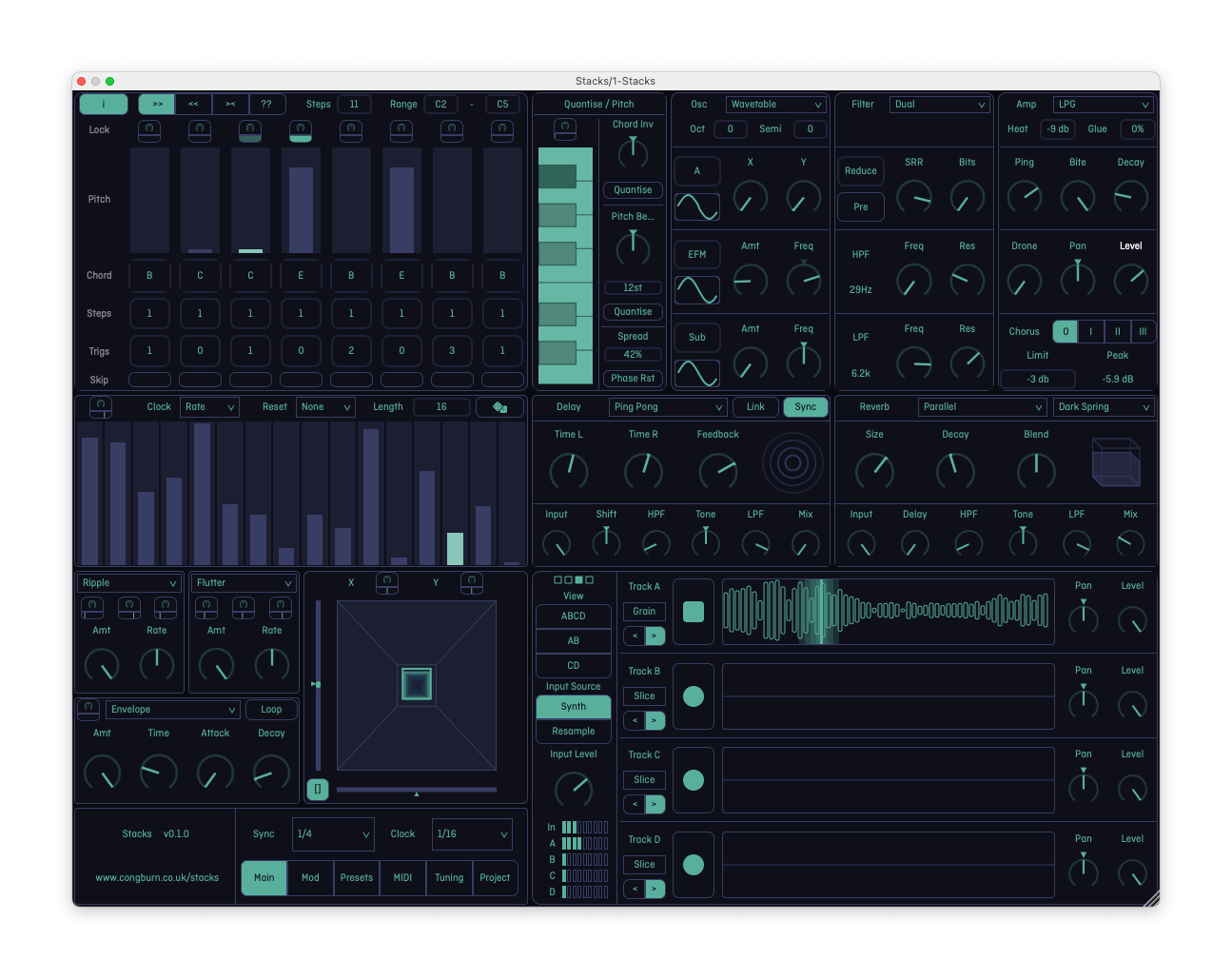From the creator of Strokes, Stacks is a unique 4-voice wavetable morphing polysynth combined with a 4-track granular looper. But that description doesn’t really do it justice: modeling and digital grunge combine to create a raunchy instrument that behaves like an experimental studio.
I’ve been playing around with a test version of Stacks on desktop. Once you’re in, this thing oozes personality. I’ll be honest; I’ve never really gotten into Strokes. And this isn’t a game you want to play without the manual. But that doesn’t mean it’s hard to use: the workflow is quick and efficient once you get the hang of the UI elements, and it quickly becomes second nature. (You may have to squint a bit at the UI, but thankfully the window is resizable.)
I almost hesitate to reproduce the specs, because I think it’s more than the sum of its parts. Let me try to sum it up first: imagine a really grungy digital synth with some edgy wavetables, plus FM (with multiple modes including non-linear), plus a nicely sculpted low pass gate, and then some additional filters – dual highpass/lowpass, variable bandwidth, and a 6x bandpass filterbank. And you’ve got some bitcrushing (sample rate and bitrate reduction) for extra edge, plus some extra saturation. That’s more than enough filtering and wavetable goodness to create a variety of melodic and percussive sounds.

Here’s a short video of me jamming with the sound engine so you get an idea:
That alone lays the foundation for a usable sound design palette; it’s very similar to what I typically throw together when I have access to a modular. (I’m really looking forward to pairing this with V4-CO / GLITHc for some extra mayhem.) But this wouldn’t be a Cong Burn joint without some extra layers. So you get a very nice algorithmic/convolution reverb with multiple routing modes plus spring reverb, stereo/ping-pong delays, and a frequency shifter.

And then comes the ‘stacking’ part: you can build complex polyrhythmic rattling chord sequences – in a way that Certainly requires you to watch the video tutorial. You can grab samples (permanently saved to your hard drive), then slice and granulate them. And you have the ability to modulate everything with everything else – there are two step sequencers, six chaos generators / LFOs (with different modes like “flutter” and “ripple”), per-stage parameter locks and an attack decay envelope, all freely assignable. You simply click the modulation switch above the modulation source and then drag the parameter range. That gives you the kind of patching flexibility you would have with a modular, but in a Massive-style software paradigm. It’s really addictive and with the sequencers and unique LFOs you can quickly build up interesting patterns.
Combine that with the recorders and you can continuously grab loops and bounce ideas down. You can also drag these into your host – so it’s a perfect match for Ableton Live, because you can keep capturing loops to use later. At the same time, it’s engaging enough that you can just use it as a synth and ignore the loops if you want.
Here are a few times when you can play with the layering:
Either way, this is a brilliant way to quickly create sounds and ideas. Cong Burn has found a clever solution to the problem that plagues computer production. We have these great synths that we love to tweak endlessly, but we can get lost in them and lose the great moments. Stacks is an environment that turns all that tweaking into song material. And it makes all that tweaking dynamic, so that even without recording and looping, the synth engine in Stacks never has to get stuck in a rut.
There are also some nice tuning options, although I’d like to see full Scala and polyphonic pitch bend support.

You can route MIDI into Stacks — I even tried modulation from the host, though that’s all you need. But it’s also a MIDI source. There’s really no workflow that Stacks can’t fit into.
If I had one complaint, it would be that I wish the UI were easier to read. The interface could also really use some interactive documentation or a more complete manual. But I hope that doesn’t discourage you, because I think you’ll find a lot to like about Stacks right away – and after watching the introductory video, I found it easy to experiment with. The few confusing UI elements become immediately apparent once they’re explained.
Watch the full video to get a sense of what this is about – and how you can create entire tracks this way. (That means the iOS and desktop versions work well together too – and of course you can just work entirely on an iPad with the mobile version if you prefer.)
Desktop version available now for an introductory price of £35 (Windows, macOS, VST3+AU); iOS AUv3 and standalone coming soon for £19.99.
Check it:
https://www.congburn.co.uk/stacks
I’m looking forward to it. The videos might not make it clear, but I definitely have some tracks growing out of this one.
